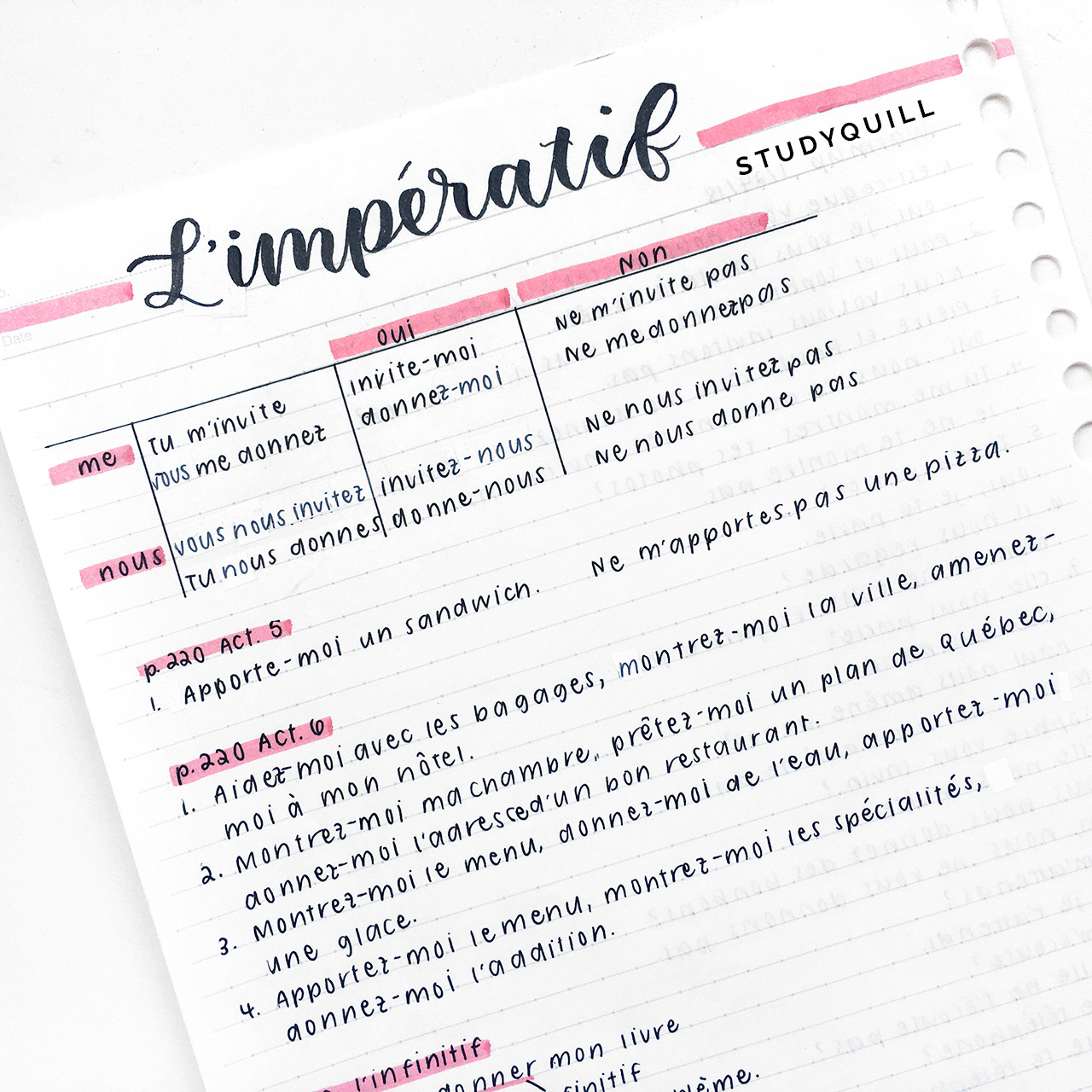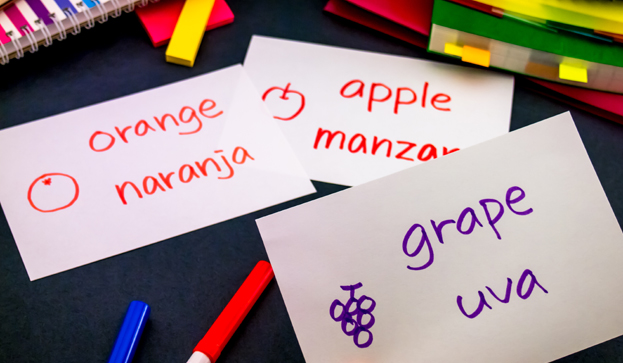
The 8 Best Ways To Learn A Language For Visual Learners
65% of the population are visual learners and therefore learn best by using images, graphics, colours, computers, books and other visual media to help them learn. If you are a visual learner, these are the best ways to learn a language for you!
The best way to learn a language for visual learners is to incorporate visual media into their study routines. This might be by watching a movie or tv show with subtitles, making flashcards with images, labelling items with vocabulary post it notes, using YouTube as a resource for free video based language lessons, using a language learning planner, learning vocabulary with flashcards and leitner boxes, reading interesting articles, watching the news in their target language, following native speakers on social media and much more!
Continue reading for an in-depth explanation of each language learning method for visual learners!
1. Watch Movies or TV Shows With Subtitles In Your Target Language
As visual learners best interpret information from graphics, watching movies or tv shows in your target language is therefore one of the best ways to learn a language.
To properly learn from a foreign language TV show or movie you have to watch it actively, not passively. This means that you jot down any new vocabulary that you come across while watching. I also suggest that you write down new phrases that you might want to use yourself in the future.
You can write down all your vocabulary in a notebook or you could use a language learning planner. Personally I like to use my digital language learning planner on my iPad pro, specifically the resource worksheet, while watching movies and TV shows in French. With this template I can write down all of the new vocabulary I come across in a neat table and also some interesting phrases. I also write down all the information about the video and even give it a rating so I know if it is a good language learning resource later on if I want to go back to it.
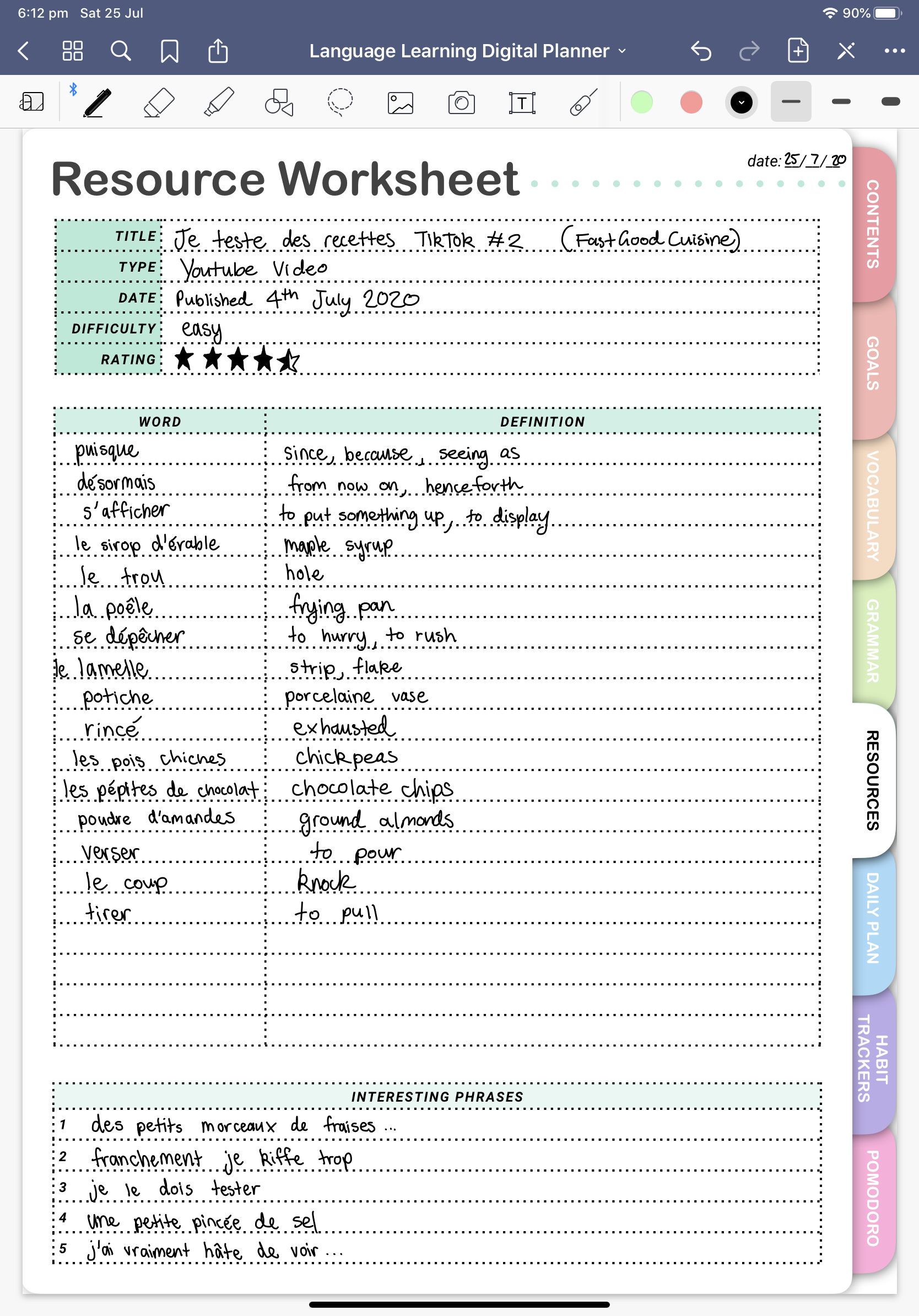
Read Also: How To Learn A Language By Watching Netflix
2. Make Flashcards With Images
Instead of making flashcards with just text on them, you can make vocabulary flashcards with images for definitions. There is a benefit to this for all types of learners as it reduces the need to translate or keep swapping between your target language and english. And the benefit is not only this.
Adding images and audio is much better than just plain old text based flashcards as it will make the content much more memorable. According to the Picture Superiority Effect in cognitive psychology, people tend to remember imagery much better than remembering words.
To add images to your flashcards you can either draw them, print them out and stick them on or even easier just add images from the internet onto digital flashcards! My preferred digital flashcard apps for language learning includes Quizlet, Anki or Studies.
3. Label Items Around Your House With Post-It Note Vocabulary
This tip is great for beginner language learners who need to learn lots of basic vocabulary such as household items. Simply get a pack of post it notes, find some household items and then start searching up the word for each item in a dictionary or using a website like WordReference. Write down singular words onto each post it note and then stick it onto the designated house hold item.
For example, if you wanted to deck out your kitchen with french post it note vocabulary you might use these household items:
- Fridge = le frigo
- Tap = le robinet
- Oven = le four
- Fork = la forchette
- Etc.
This is a super effective language learning technique for visual learners as it will help you build associations between a word and an object.
4. Get Free Grammar Lessons From YouTube
It is a really good idea to utilise the wide range of free grammar lessons that you can find made by native speakers and language teachers on YouTube. As these lessons are so visual due to their video nature, you will get the maximum benefit out of them as a visual learner.
If you do decide to start using YouTube for language learning, don’t be only limited to ‘educational’ videos as in structured lessons. You should also watch entertainment based videos that are made for native speakers or watch vloggers. From these videos you will be exposed to the more conversational and casual side of the language which you might not learn from a textbook.
Read Also: How To Learn A Language By Watching YouTube
5. Use A Language Learning Planner
As a visual learner myself I really like to use a language learning planner in my studies as it lets me put all of my language learning material in one place. This planner has heaps of vocabulary, grammar and note taking templates that encourage me to be always writing down new things in french, the language I am currently learning.
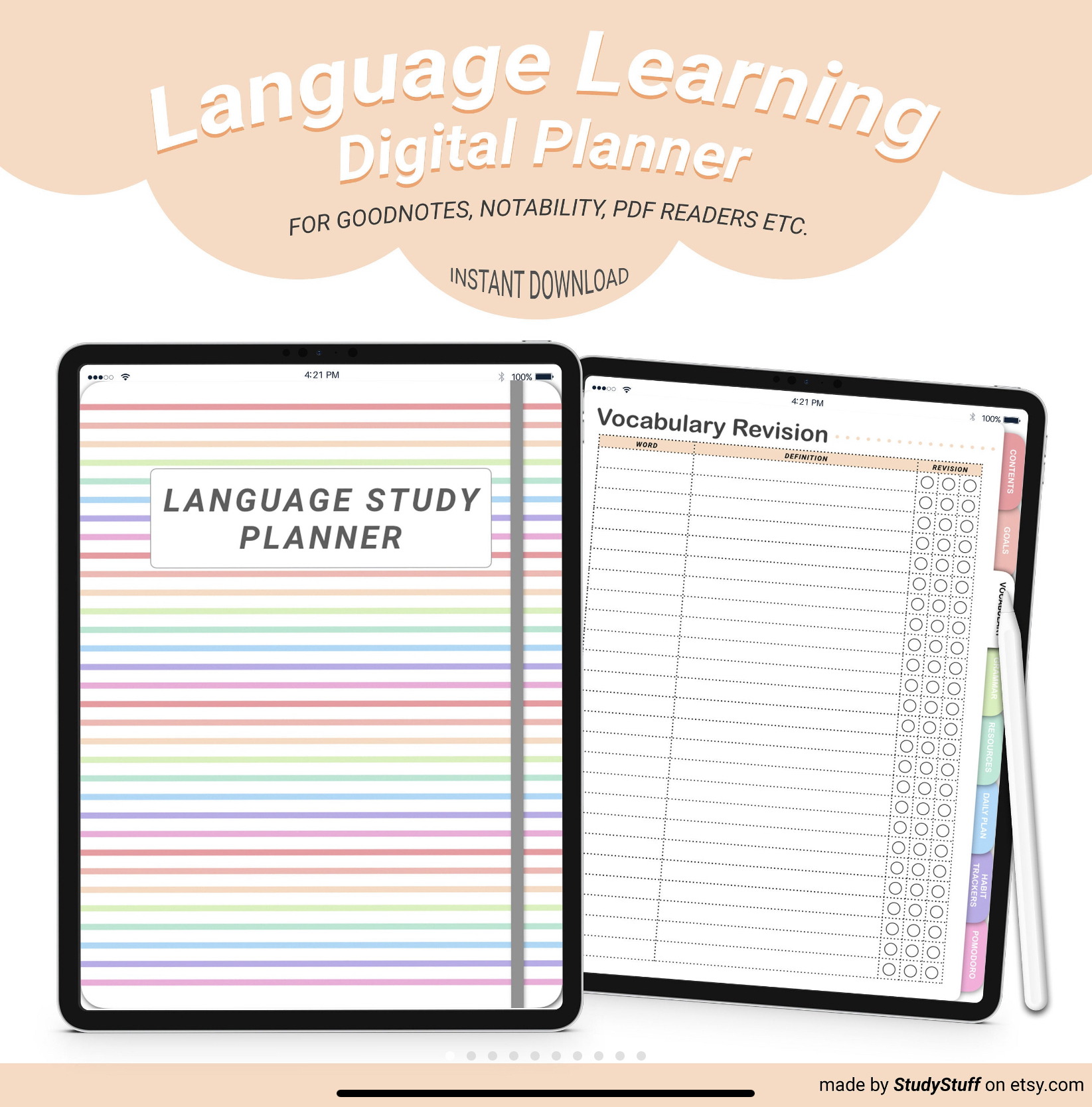
This planner includes pages such as:
- Goal Planning Pages
- Vocabulary Pages
- Verb Tenses
- Grammar Rules Template
- Cornell Style, Lined & Grid Notes
- Resource Worksheets
- Daily & Study Planning
- Habit Trackers
- Pomodoro Study Tracker
- + much more
This planner is intended for use with an iPad pro and Apple Pencil and has hyperlinked tabs down the right hand side of the notebook. Each tab takes you to a divider page for the sections of the notebook. Every page in the notebook can be duplicated so you can use as many or as little pages as necessary.
- Check out my Digital Language Learning Planner Here!
- Check out my Printable Language Learning Planner Here!
6. Learn Vocabulary With Spaced Repetition Flashcards & Leitner Boxes
If you are going to learn vocabulary with flashcards, you really should be applying the principles of spaced repetition to ensure that you are moving information into your long term memory efficiently. If you want to learn how to do this, you should read my article How To Study Flashcards With The Leitner Method.
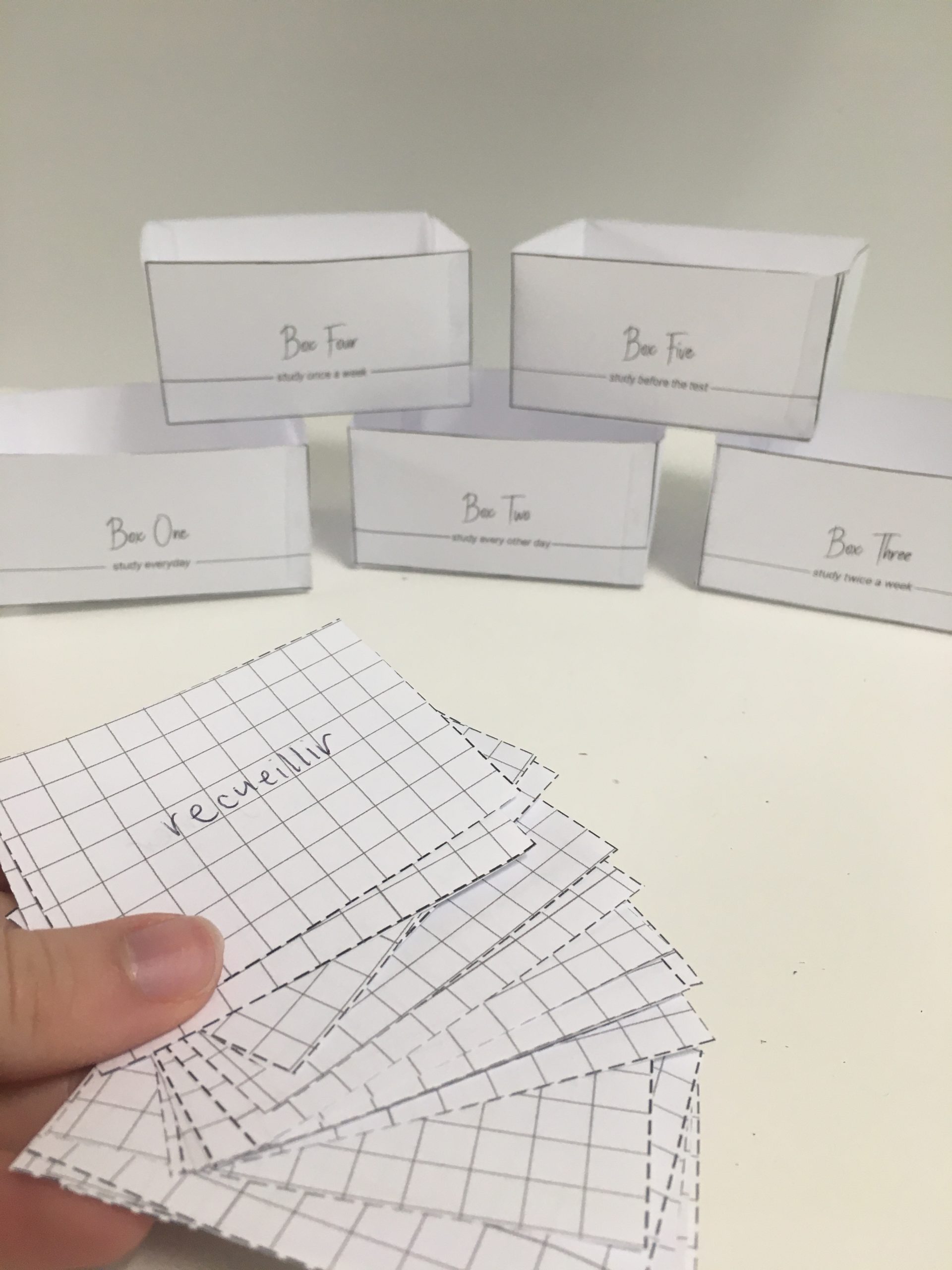
7. Read Interesting Articles Online
Reading is one of the best ways to learn for visual learners. Luckily reading is one of the main areas of language learning as well! I suggest that you read at least one interesting article online in your target language each week. While you do it you should make note of new vocabulary. I really like to do this in my vocabulary revision template as it encourages me to look back and revise the new vocabulary that I come across.
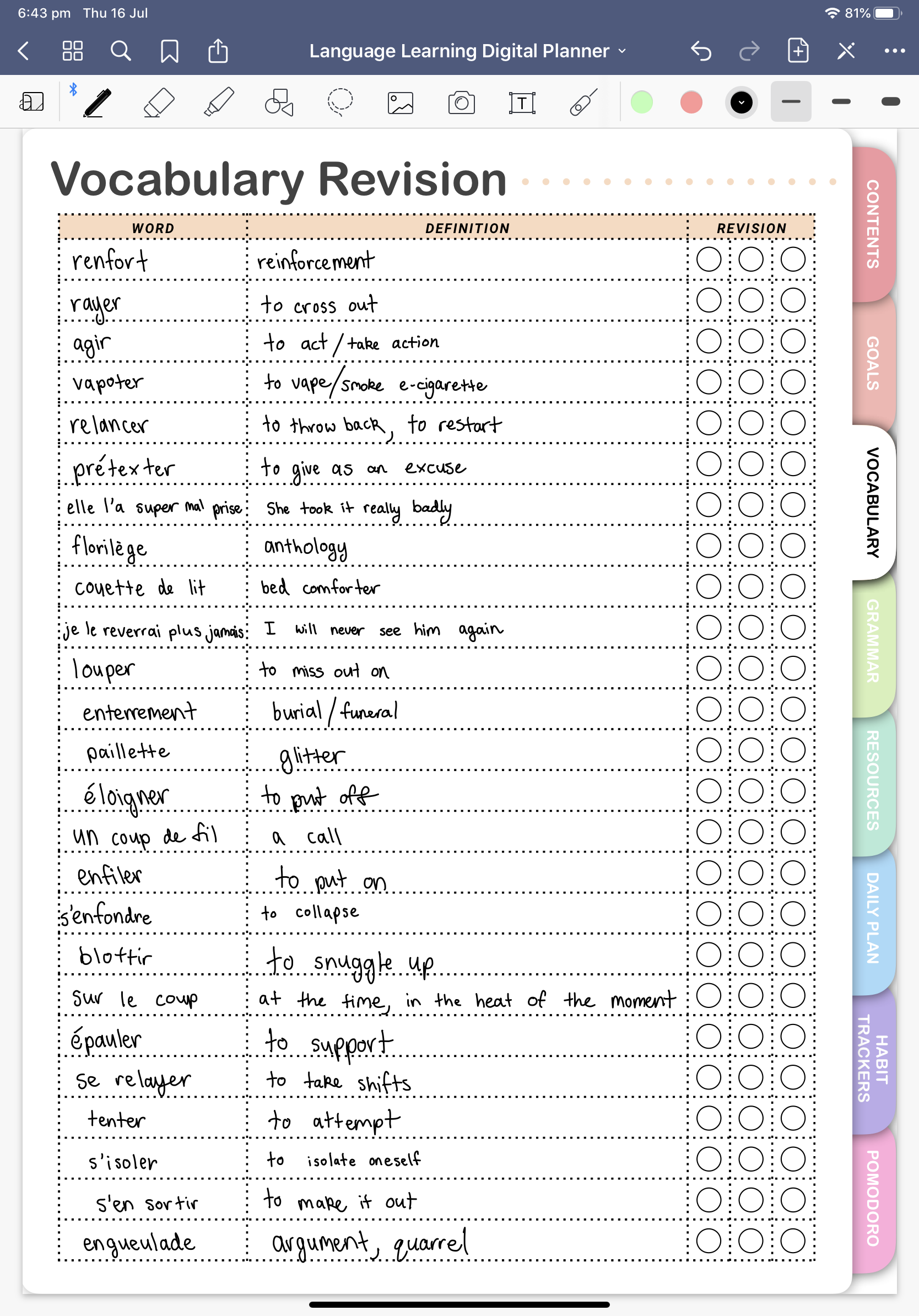
8. Follow Native Speakers On Social Media
Social media takes up a big part of everyone’s lives these days but not many people know that you can use it to language learn. And it is as simple as following some native speakers!
In this way when you scroll through your feed you will get little snippets of whatever language you are learning. Now you don’t need to put any conscious effort into studying a tiny bit each day!
Join more than 1,212,346 people from 192 countries and learn a new language at your own pace at Rocket Languages!
Check Out The Online Courses Below:
Or Join A Live Online Language Learning Class With Real Teachers On Lingoda!
Check Out The Online Courses Below:
Further Reading
The best ways to learn a language without going to classes include: watching foreign language films on Netflix, using a …
There are many different note taking methods that can work well for language learning. To take effective notes for language …
If you are working full time and you want to learn a language, you need to make the most of …
Kinesthetic learners are the most physical of all learning styles meaning they absorb information through movement, touch and motion. Therefore, …
Flashcards are effective for language learning if you make and study them in the correct way. This is by making …
Want to learn a language without a teacher but need some ideas for where to start? You have come to the …



